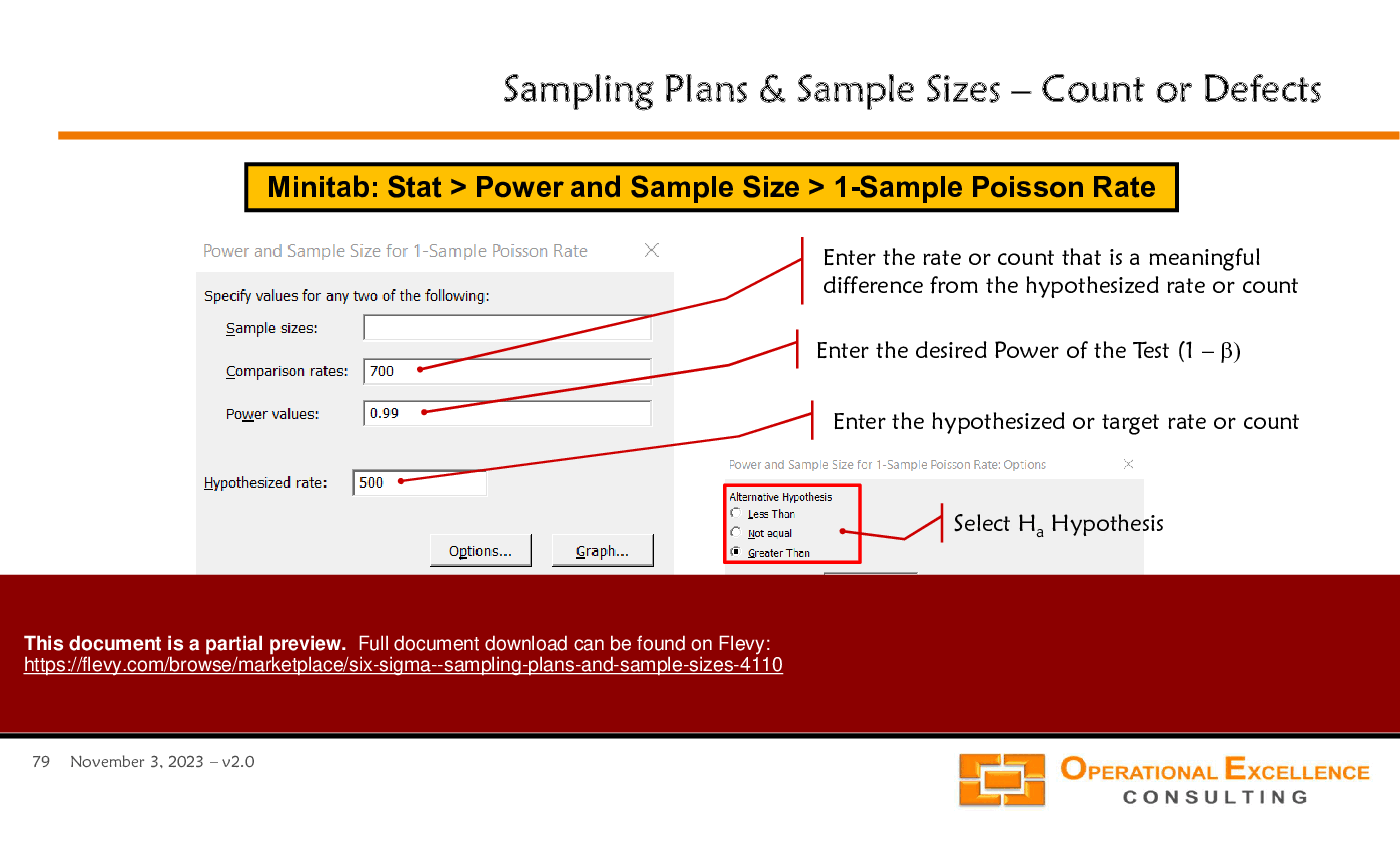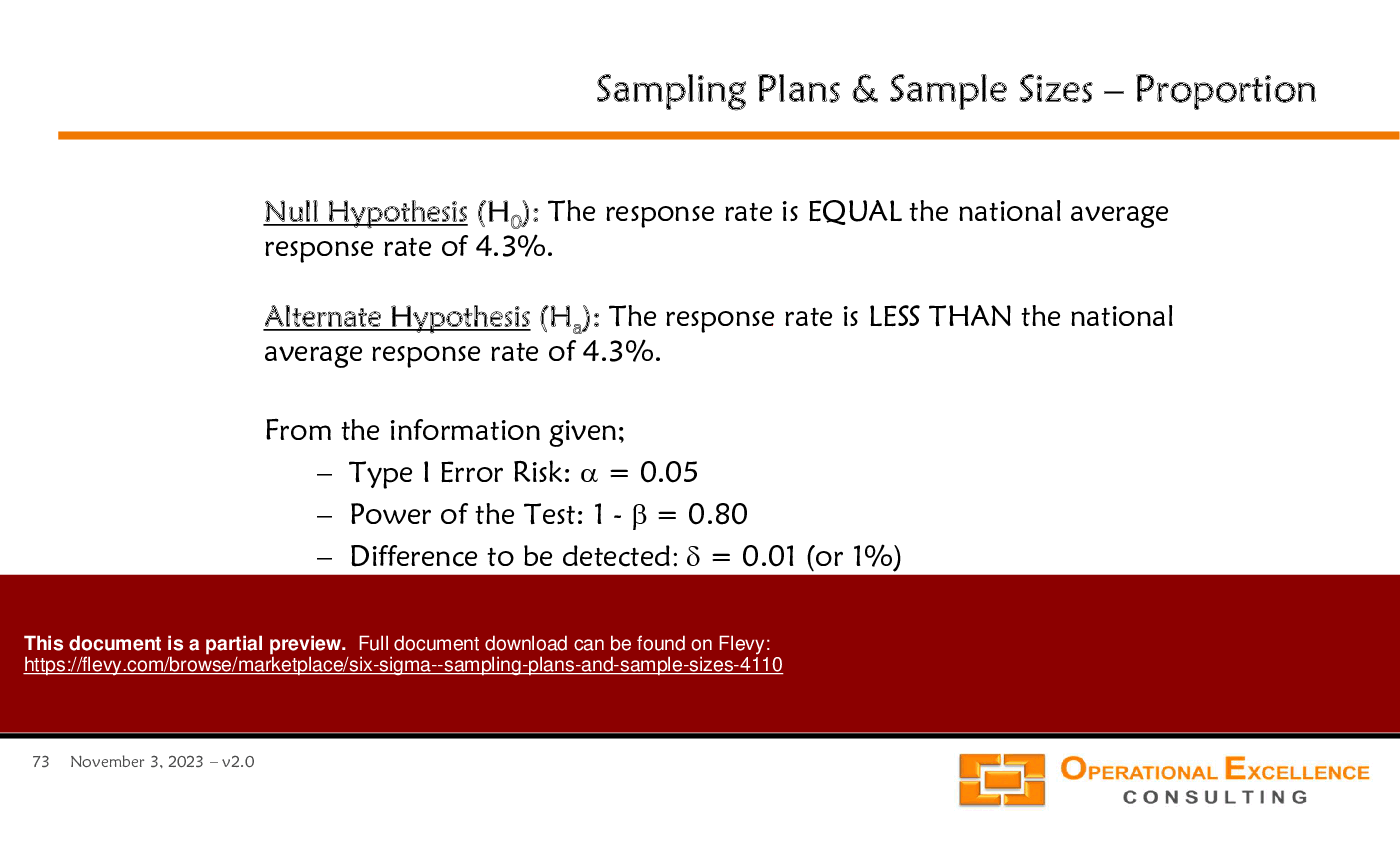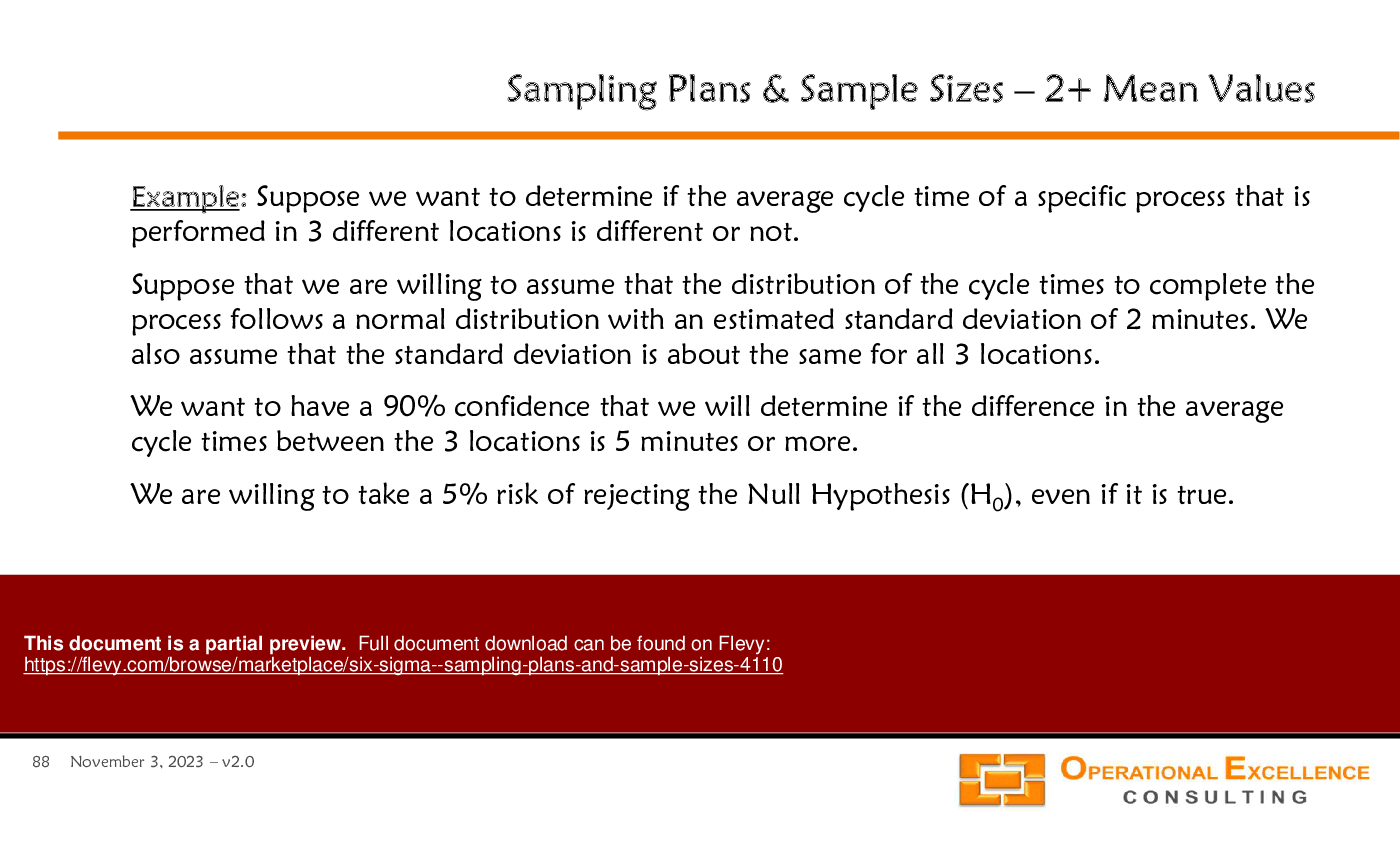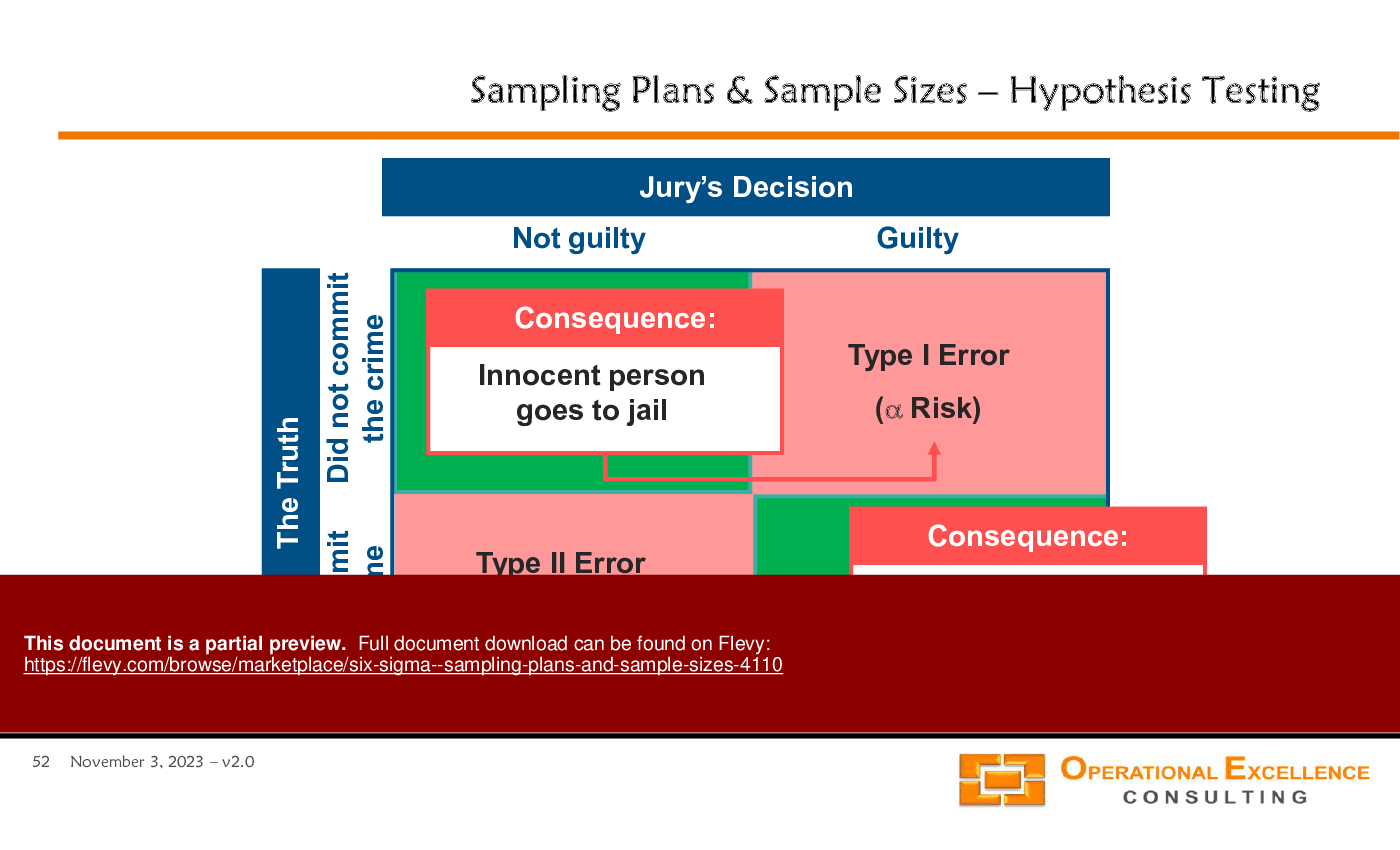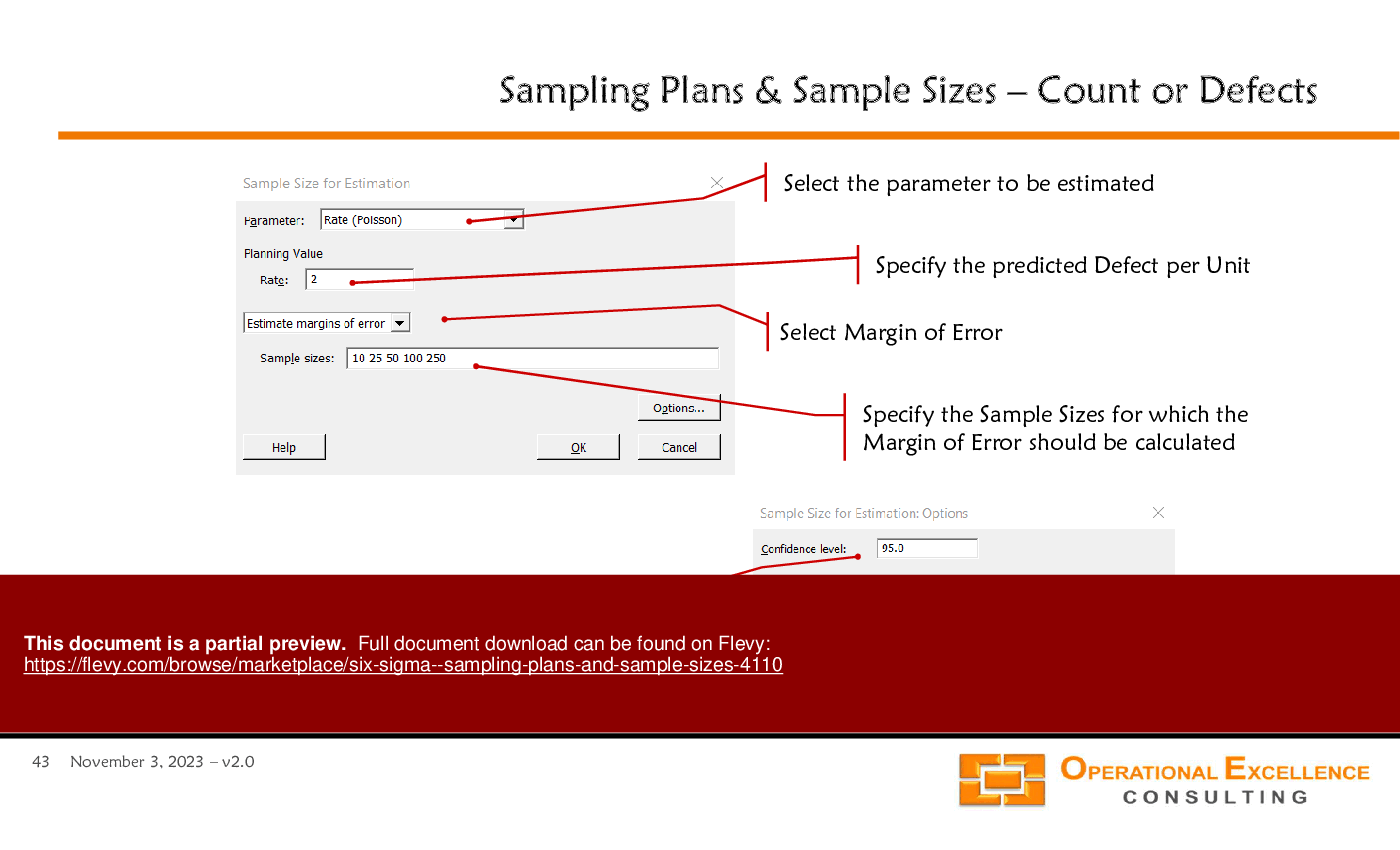Six Sigma - Sampling Plans & Sample Sizes (PowerPoint PPTX Slide Deck)
PowerPoint (PPTX) + (XLS) 120 Slides
BENEFITS OF THIS POWERPOINT DOCUMENT
- Determine Sample Sizes for Estimating One Parameter
- Hypothesis Testing & Sample Sizes for One Parameter
- Hypothesis Testing & Sample Sizes for Comparing Two Parameters
SIX SIGMA PROJECT PPT DESCRIPTION
The Six Sigma Sampling & Sample SizesTraining Module v1.0 includes:
1. MS PowerPoint Presentation including 120 slides covering
• Sampling Plans (Simple Random Sampling, Stratified Sampling, Cluster Sampling, Systematic Sampling, Subgroup Sampling),
• Sample Sizes for Estimating One Parameter,
• Introduction to Hypothesis Testing,
• Hypothesis Testing & Sample Sizes for One Parameter,
• Hypothesis Testing & Sample Sizes for Comparing Two Parameters, and
• Hypothesis Testing & Sample Sizes for Design of Experiments (DOE).
2. MS Excel Six Sigma Confidence Interval Analysis Calculator making it really easy to calculate Confidence Intervals (mean value, standard deviation, capability indices, proportions, count) and perform a Comparison of two Statistics (mean values, standard deviations, proportions, counts).
Note: The material is based on Minitab 19. Please visit their website to download a 30-day free trial license.
"After you have downloaded the training material, you can change any part of the training material and remove all logos and references to Operational Excellence Consulting. You can share the material with your colleagues and clients, and re-use it as you need. The only restriction is that you cannot publicly re-distribute, sell, rent or license the material as though it is your own. Thank you."
Got a question about the product? Email us at support@flevy.com or ask the author directly by using the "Ask the Author a Question" form. If you cannot view the preview above this document description, go here to view the large preview instead.
Source: Best Practices in Six Sigma Project PowerPoint Slides: Six Sigma - Sampling Plans & Sample Sizes PowerPoint (PPTX) Presentation Slide Deck, Operational Excellence Consulting LLC
SIX SIGMA PROJECT PPT SLIDES
Evaluating Defect Rates through Sampling Analysis
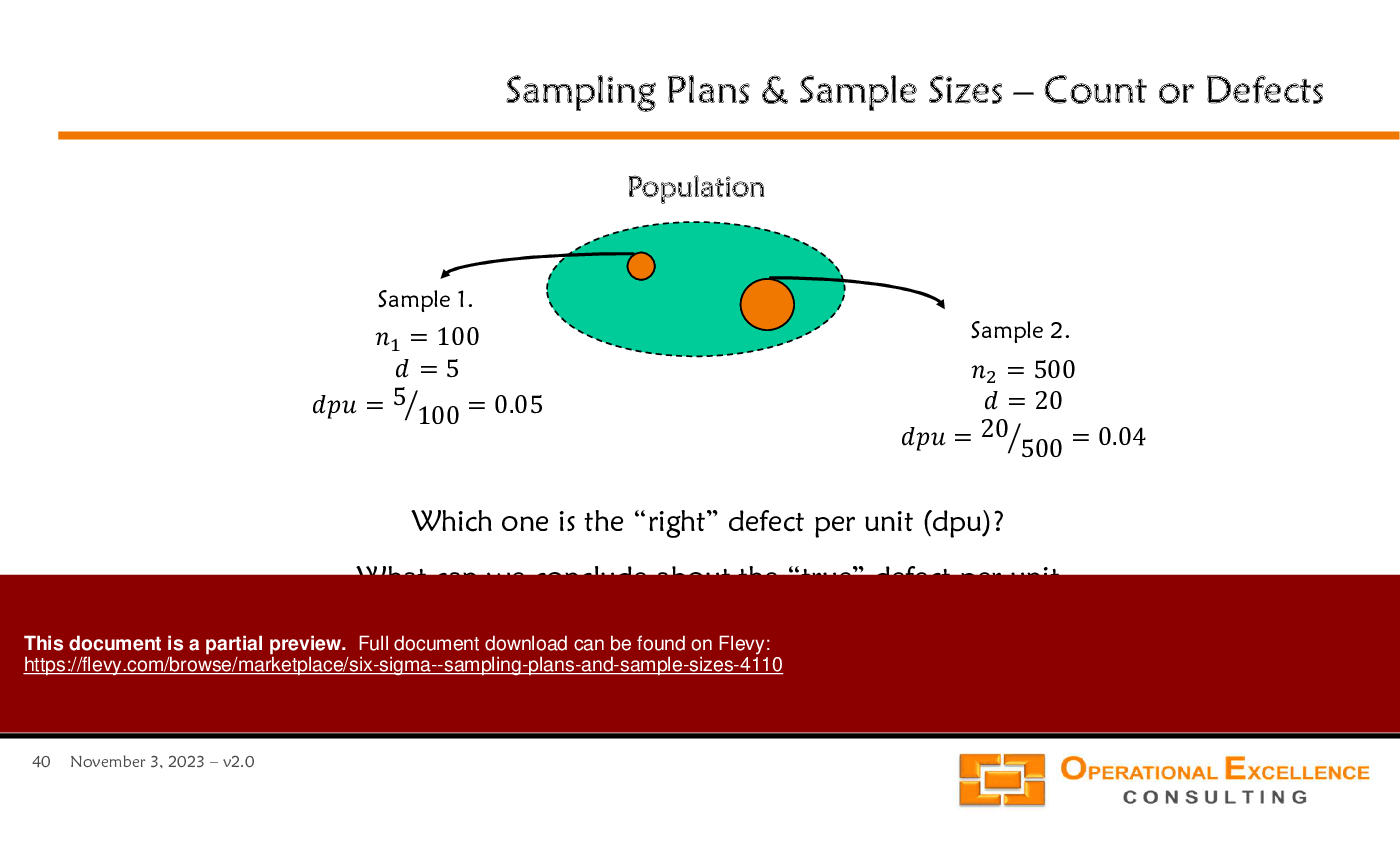
This PPT slide presents a comparative analysis of 2 sampling plans focused on defect rates within a population. It outlines 2 distinct samples: Sample 1, which consists of 50 observations with 5 defects, resulting in a defect rate of 10% (p = 0.1), and Sample 2, which includes 500 observations with 45 defects, yielding a defect rate of 9% (p = 0.09).
The visual representation highlights the population and the 2 samples, emphasizing the differences in sample size and defect counts. The questions posed on the slide challenge the reader to consider the validity of the defect rates calculated from each sample. It asks which defect rate might be deemed "correct" and encourages a deeper investigation into the implications of these estimates on understanding the true defect rate.
The slide also raises critical considerations regarding sample size adequacy. It suggests that the reliability of the defect rate estimates may hinge on whether the sample sizes are sufficiently large to draw meaningful conclusions. This prompts a discussion about the statistical power of the samples and the potential impact of sample size on the accuracy of defect rate estimations.
Overall, this slide serves as a thought-provoking tool for executives and decision-makers who need to assess quality metrics and make informed decisions based on statistical analysis. It underscores the importance of robust sampling methods in evaluating operational performance and quality assurance.
This document is available as part of the following discounted bundle(s):
Save 39%!
OPERATIONAL EXCELLENCE Training Module Library
This bundle contains 18 total documents. See all the documents to the right.
Save 22%!
SIX SIGMA METHODOLOGY Training Module Library
This bundle contains 7 total documents. See all the documents to the right.









